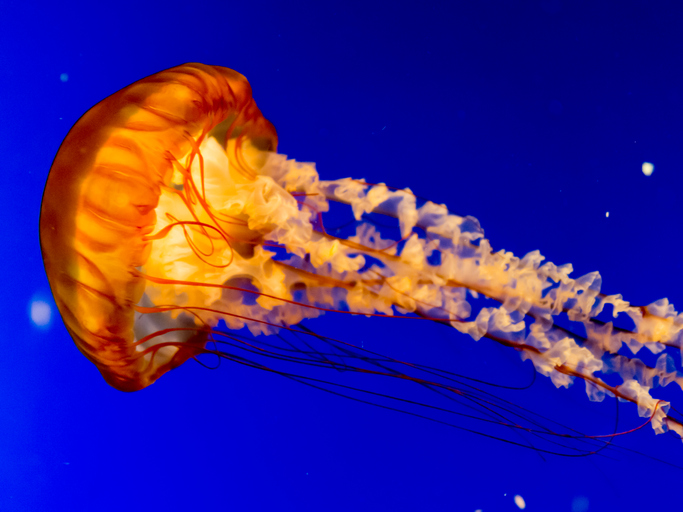 Main Content
Main ContentJellyfish
Jellyfish represent some of the oldest multi-cellular organisms on Earth. They are interesting and oddly beautiful creatures. While most jellyfish pose little threat to humans, others can cause extreme harm.
The Gulf of Mexico contains several jellyfish including the Atlantic sea nettle, moon jelly, pink meanie, and cannonball jellyfish. While related, the Portuguese man-of-war is not a member of the class Scyphozoa and is not a true jellyfish.
Jellyfish stings occur from contact with its tentacles. Tentacles contain microscopic structures called nematocysts containing thousands of spear-like harpoons which are designed to penetrate skin and deliver venom when contacted. The effects from these stings vary in severity based on several factors such as duration of contact, site of contact, body surface area contacted, victim’s sensitivity to venom, and the species involved. Stings can involve more than 100,000 nematocysts firing.
The most venomous and deadly jellyfish is the Australian box jellyfish (Chironex fleckerii) found in the waters surrounding Australia and the southeastern Pacific. Although relatively rare, the Irukandji (Carukia barnesi) and the Portuguese man-of-war have also caused death in humans.
While it is best to avoid contact with jellyfish, occasional encounters do occur. Here are some tips if you are stung by a jellyfish:
Avoid scratching or rubbing the affected area. This may cause further envenomation.
Wash the area with warm salt water. DO NOT USE FRESH WATER.
Do not urinate on jellyfish stings.
For species of box jellyfish: Spray or soak the area with vinegar for 30 minutes.
For sea nettles or mauve stinger jellyfish: DO NOT use vinegar.
Remove the nematocysts: apply a slurry of baking soda or flour and then shave area with a non-sharp object, like a credit card. Or remove nematocysts with double gloved fingers or forceps.
Seek medical attention as needed.